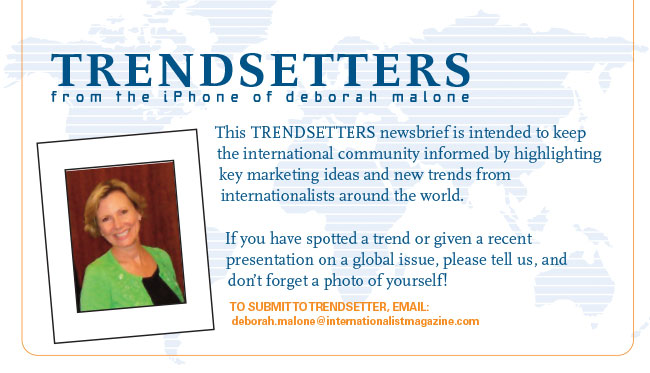
Greg Paull
Trendsetters: R3's Greg Paull Discusses Six Degrees of Integration for Agency-Marketer Alignment
Ask Greg Paull of global consultancy R3 about integrated marketing campaigns and he'll refer to a well-known scene from one of the early episodes of "Mad Men." Don Draper presents the new campaign for Lucky Strike, and it's a success. One agency, one key client, and the whole team aligned around a single brief, single output and single results.
According to Paull, "This is clearly a work of fiction." But he adds, "It doesn't have to be."
He recently introduced a report called "The Integration 40"-- (www.R3integration40.com)-- based on an R3 initiative to showcase forty of the world's best integrated campaigns based on a global call for entries. Although he admits to probably missing a great campaign or two, the report is designed to start the conversation about better managing today's complex integrated marketing process.
"The Integration 40" case studies were chosen through consistent scoring criteria based on brands, creativity, process and results. Interestingly, the R3 team saw six types of client-agency alignment structures or "six degrees of integration" among the best work. They included:
1. Multiple Best-in-Class Agencies
In this model, the marketer leads integration -- choosing the best possible creative, media, digital, PR and event agencies regardless of holding company -- and then has the task to pull them together. Among "The Integration 40," this is by far the most common method used, and this "best of breed" approach occurred in 38% of cases. The challenge? It puts a lot of onus back on the marketer.
2. Lead Agency Model
This structure puts pressure on the lead agency to drive integration. This model was used in 25% of "The Integration 40" cases. Interestingly, an agency other than a creative agency took the lead in 32% of occasions--and the campaign was still executed brilliantly. Expect to see more of this model in the future.
3. Sibling Agency Model
This is driven by Holding Company integration. It only occurred in 20% of the cases of the final 40, which suggests it may yet be seen as the optimal model for the future. In this structure, there's simplicity in the working process, but a potential lack of flexibility for the marketer if things go wrong.
4. Holding Company Custom Agency
This is essentially about a holding company pooling resources into a 100% dedicated team within a holding group. According to Greg Paull, "This can only work well for clients with scale, but of course, has its own challenges with attracting the best creative talent and breakthrough thinking."
5. Free Agent
In an era of crowdsourcing and social, will this be a new model whose time is to come? Paull suggests, "What the marketer gains in total flexibility of creative resources, it surely loses in terms of strategic governance and contribution."
6. One Stop Shop
Perhaps a relic of the Mad Men days, but the one-stop shop is still the common approach in Japan, Korea and Brazil, along with smaller marketers who simply can't afford multiple agencies. For every person who dreams of creative and media agencies merging back again, there must surely be two who recognize the giant strides in media sophistication that has occurred with them apart. "While we saw this in 10% of our relationships," says Paull, "We wonder in five years' time if this will be the case."
What else did the "The Integration 40" initiative uncover?
In addition to noticing six distinct client-agency models, six general trends also emerged:
- Big ideas lie at the heart of success
- Defining the chain of command is critical to realizing true integration
- Think about "Curate" as much as "Create"
- Promote accountability through taking measurable action
- Training Matters
- Companies like P&G, Coca-Cola, Unilever, Nestle and others continue to be the best-in-class brands when it comes to integration. These firms attract and retain the best talent, push their agencies in different ways, and motivate the concept of truly "coming together." Integration does matter to the world's best marketers and their agencies.
Greg Paull co-founded and runs R3 (www.rthree.com) a global consulting firm focused on improving the efficiency and effectiveness of marketers and their agencies. R3 works with nine of the world's top twenty marketers including Unilever, Coca-Cola, AB InBev, Samsung, Mastercard, Nestle and Mercedes Benz.


